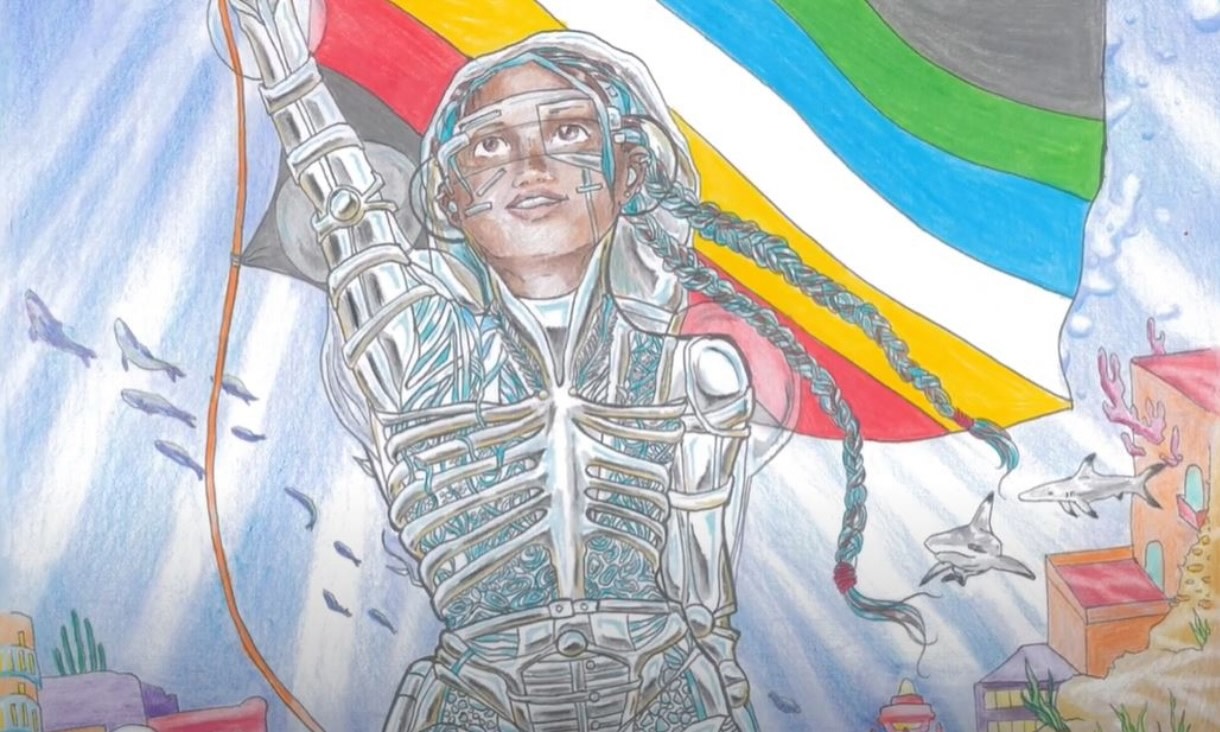Three students, Natalie Vigo (Vigo), Zoe Clare (Enixy) and Xerophytis have produced creative video works that respond to Alter State’s 2024 theme “Disabled Futures: A glimpse of what’s to come”.
Drawing on their own lived experiences of disability, the students each produced a one-minute video using animated illustrations and personal narratives to show their interpretation of the world, 50 years into the future, where barriers no longer exist.
Their works are shown alongside more than 100 other Deaf and Disabled artists featured in Alter State 2024 through performances, events and in-person talks across seven venues including Arts Centre Melbourne.
Jodee Mundy OAM, CODA (child of Deaf adults), Disabled artist and Creative Lead of Alter State said it was important to feature student voices in the Alter State program considering the theme’s focus on the future and praised their considered and nuanced approach to envisioning truly inclusive futures.
“It's important to acknowledge that these students may one day be leaders and custodians of disability-led work towards cultural equity and having role models of all ages and backgrounds is vital to its success.”
“Each of their pieces was deeply moving, clever and playful. I loved how they each asked viewers to reimagine our future to move at the speed of balance, also known as ‘crip time’.
“Audience feedback has been overwhelmingly positive,” she said.
Imagining inclusive futures
Vigo, who studies a double degree in Bachelor of Social Work (Honors) / Bachelor of Social Sciences (Psychology), drew on themes like nature and invisibility to envisage a world where assistive technology is normalised and adaptive to environmental settings.
“I had been thinking a lot about accessibility and access to nature. Being out in the wild can be really healing for a lot of people but is very seldom accessible,” Vigo said.
“The underwater scene and the title ‘we breathe underwater’ is a metaphor for how us disabled folks learn to live within worlds that are not made for us.”
“We constantly adapt and advocate for ourselves and our communities to overcome the challenges of living in an ableist world.”
“The coral reef in the foreground represents diversity and our capacity to accommodate unique differences.”
“It reminds us that, like in the natural world, humankind is not homogenous, and that disability is a diverse and natural human experience,” she said.
“I also intentionally chose not to make the person in the video stereotypically 'disabled-looking' because I wanted to acknowledge that not all disabilities are visible. I hoped that others (like myself) who live with invisible disability would feel seen.”
Vigo said her studies and passion for social work inspired her approach.
“I love social work for building connections, finding creative ways to subvert oppressive systems and envisioning a utopian future.
“Social work helps me find humanity in the face of fear and stigma and to find hope where some only see doom,” she said.





